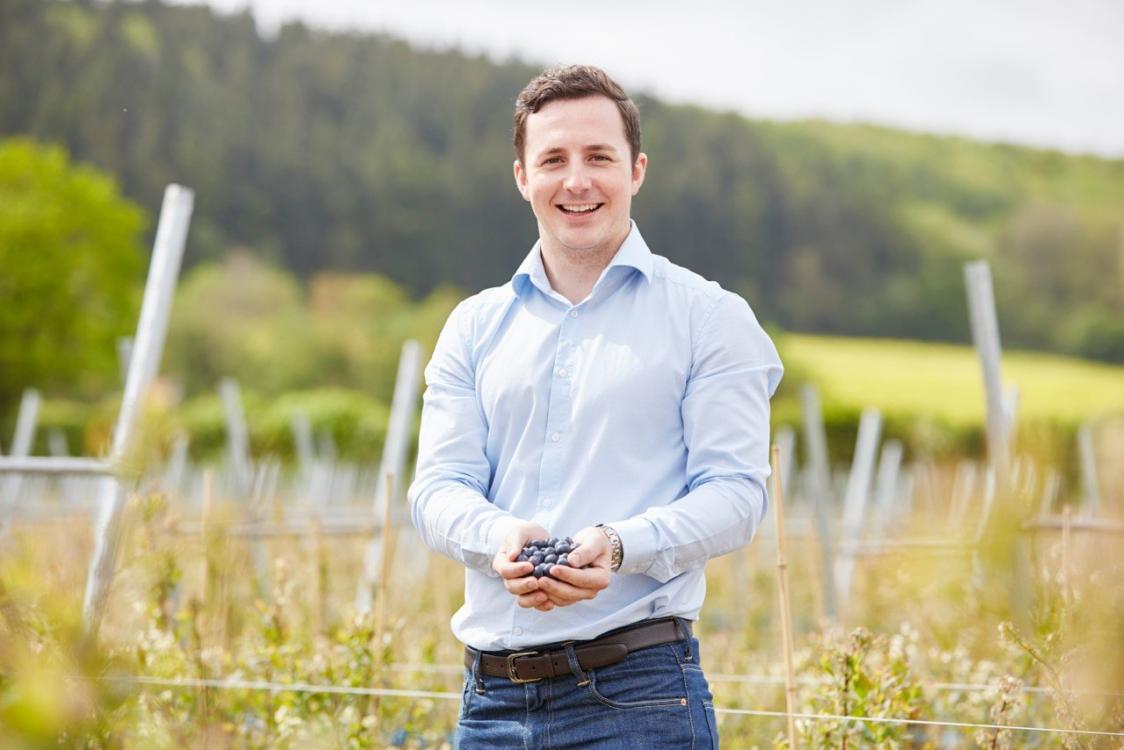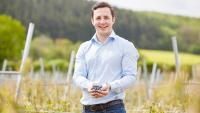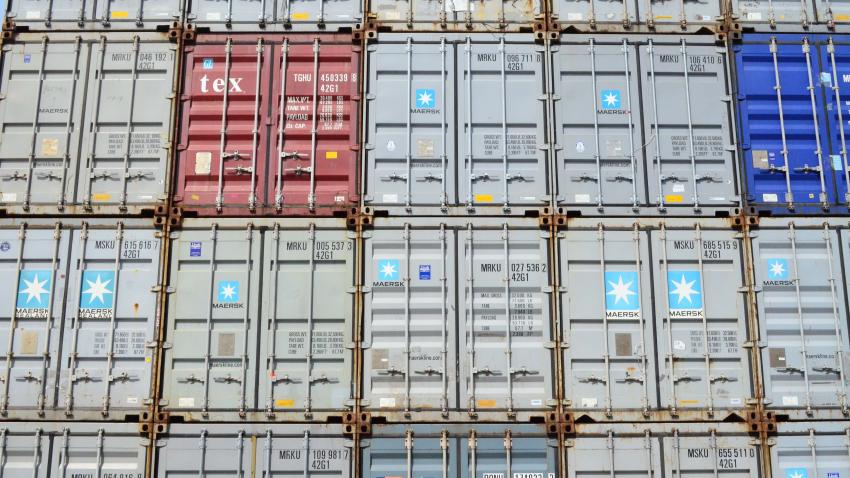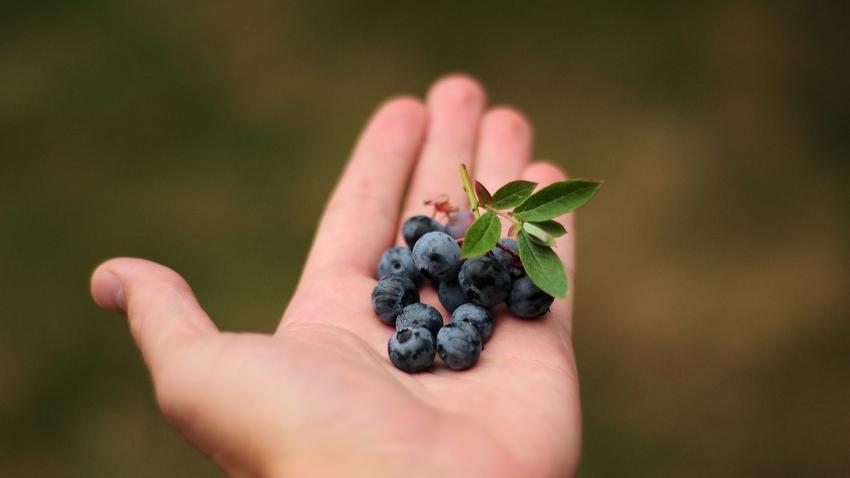You are here
Back to topHorti China 2018: S&A Trials Breakthrough Winter Blueberry Crop from New Chinese Farm

Oliver Davies, Director of Operations, Asia Pacific, at S&A Fresh Produce
How to grow quality blueberries during the off-season in a muggy subtropical climate—at the edge of the growing range for a berry whose wild cousins thrive in the artic tundra? “You’ve always got to look for continuous improvement, always try to do a bit better,” says Oliver Davies of UK-based S&A Fresh Produce, which during the coming months will be conducting commercial trials of a breakthrough winter blueberry crop from its newly established farm in southwestern China’s Yunnan province. “One change may be too small to see an effect. But add up 20 small changes and you see a big difference.”
Produce Report spoke with Davies during the China Green Week and Horti China show last week in Shanghai, where he was presenter at the “Berry Fruit Technology Forum – Launch of 2nd International Strawberry Congress” event.
Davies is part of the fourth generation of his family to work in farming and the produce business. His father John founded S&A in the 1990s after branching out from farming potatoes to growing strawberries in polytunnels on his farm in Herefordshire, England. The company has since grown into a global grower and purchaser of fruits and vegetables with a focus on strawberries, raspberries, blackberries and blueberries. S&A is the largest strawberry grower in the UK and, in addition to the new farm in China, it operates farms in Spain and Chile. It also supplies to supermarkets across the UK and Europe.
Oliver has been working in the family business since he started picking strawberries at 13 years of age. He came to Shanghai in 2013 to set up the company’s Asia Pacific branch, where he now serves at the Director of Operations. During those first few years in China, S&A was largely sourcing fruit from South America to sell here. But, according to Davies, “after being in China for about 18 months, and realizing the difficulty in providing very good quality blueberries from overseas because of the transit time, I saw that the future was to set up a growing operation in China.”
Davies then spent the next roughly 18 months traveling all around China searching for a suitable location for this growing operation before settling on Yunnan.
Northern areas of Yunnan are already home to established clusters of production from varieties of northern highbush blueberries. But S&A eventually chose to establish its farm in Yunnan’s southern Xishuangbanna prefecture, which never sees snowfall and does not meet the chilling requirement of northern highbush plants. S&A has therefore planted two proprietary evergreen varieties, with plans to introduce more new varieties in coming years. But hot and rainy summer monsoon weather more suited to bananas than blueberries mean Davies’ team must nevertheless be constantly vigilant against fungal infections and other pests and pathogens.

The reason S&A is willing to tolerate this challenging growing environment is that they hope to pull off the impressive feat of being, “completely counter-seasonal to China’s main domestic blueberry production,” which runs from roughly April to September. S&A can thereby offer domestically produced blueberries to Chinese consumers as a fresher alternative to imports from Peru and Chile that has a smaller carbon footprint. Ocean shipment of fresh blueberries from Chile takes 21 days, while berries from S&A’s Yunnan farm can reach consumers in eastern coastal cities in just two days. S&A can even start getting its domestic berries onto shelves in October, during the gap between the end of China’s traditional blueberry season and the arrival of imported berries.
Not producing during the same time as the rest of China will also help S&A avoid issues of low prices due to high supply, and the inconsistent quality that are a challenge to the main domestic blueberry crop.
“Five years ago, who would have thought you’d have Chinese blueberries in October?” says Davies. The feat of coaxing a winter production out of China rests on a significant amount of infrastructure investment, technical know-how, rigorous management practices and huge archives of proprietary growth data about blueberry plants.
“In the UK, we have a whole scientific lab dedicated to collecting samples from our farms all around the world,” says Davies. Blueberries at the Xishuangbanna farm are grown completely in substrate, like at most of S&A’s farms. He continues: “we do substrate analysis, drip analysis, drain analysis, leaf analysis; now we have our own computerized growing management system that we’ve been developing over the past ten years because we have all this data. And that’s almost becoming like A.I. now in terms of providing feedback to our growers. We have our growers input into the system what they think they should do, and then the computer comes back with what it thinks they should do. And then if they both agree, they do it. If they disagree, then it’s a conversation to be had at a higher level.”

S&A also paid a premium in construction costs to import almost all of its new China growing operation from abroad—from the blueberry plants themselves, to substrate, to irrigation systems and plastic covering for the greenhouses. “It’s our first project in China, and we wanted to make sure it wouldn’t fail from us buying something we didn’t know anything about,” says Davies. “It’s a big investment, so we wanted to make sure that to start we had everything we know works—and as we expand, we’re going to source more things from China.”
Of course, this big investment in getting things right the first time means a long time to get returns. “Everything we do is very sustainable,” says Davies. “It’s very high cost, but our vision is very long-term. We’re not looking to get in here, sell, and get out.” He notes that all of the infrastructure S&A has built at its Xishuangbanna farm is designed to last for a minimum of 25 years and can sustain wind speeds of 140 km/h.
As he looks forward to the farm reaching full commercial blueberry production in the next few seasons and the development of the market over these coming decades, Davies is optimistic and welcomes the participation of well-known brands like Joyvio or Driscoll’s, which are also growing blueberries in Yunnan.
“The consumption in China is a fraction of what it is in the UK, and the UK is only half of what it is in America,” says Davies. “So the market’s got huge potential. But most consumers in China have never tried a blueberry, so producers have got to deliver really good quality fruit that consumers want to keep buying. Some of the other well-known brands are doing a good job of growing the market, which helps everybody. In terms of competition, I actually see my competition as being the bad quality blueberry growers; because they are putting consumers off from buying blueberries again.

















Add new comment